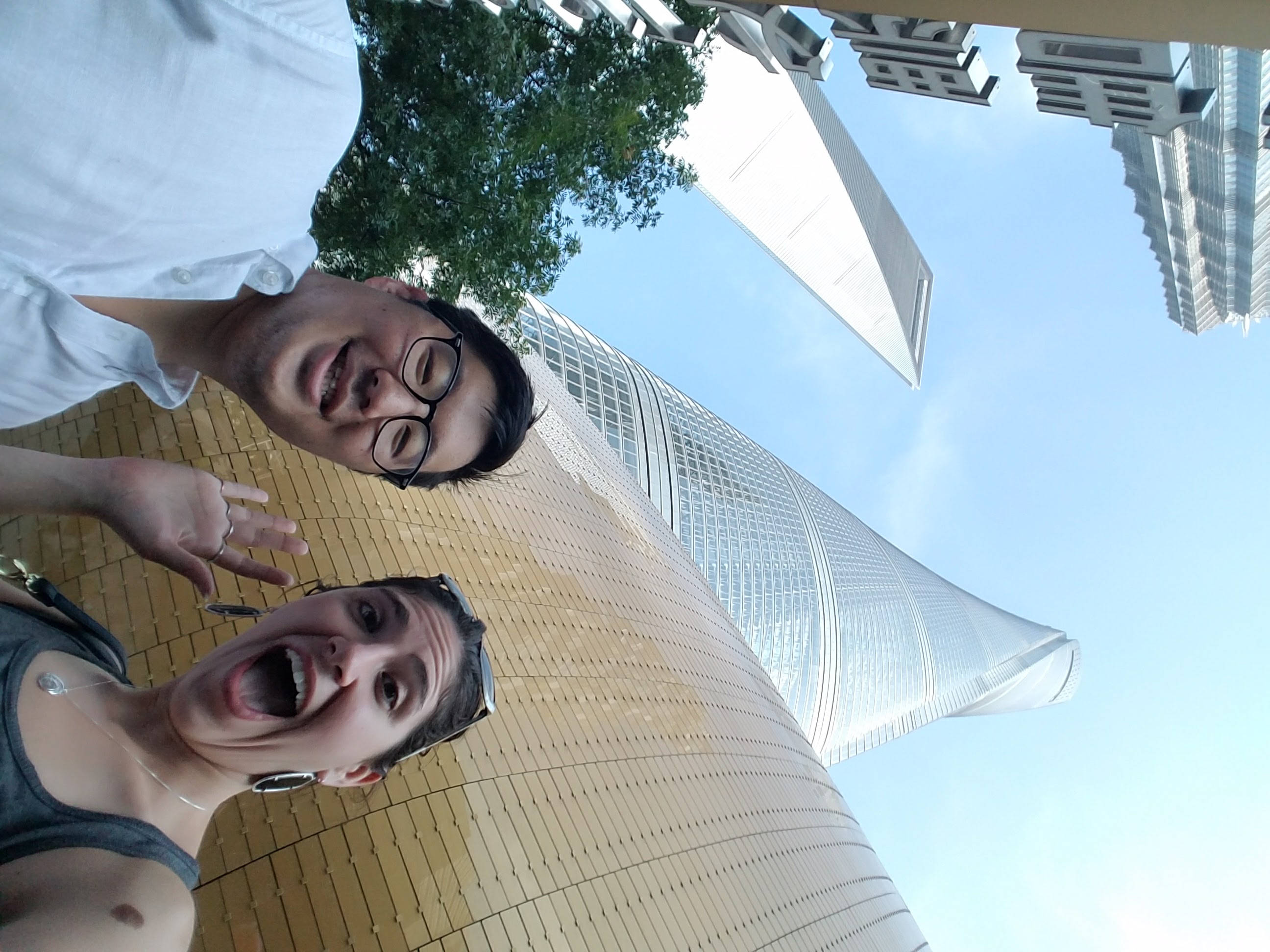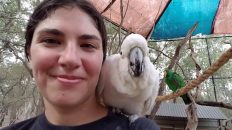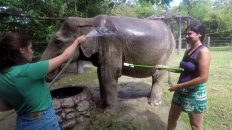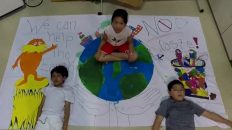I got to visit a very good friend, Isaac, in Shanghai. He was a great tour guide and taught me a lot of things about the city. It was great to learn about the progress China is making to be more Lorax-friendly.
Before going on this trip, I heard some negative things about China. One was the issue of smog – that you needed to wear a mask everywhere. Even though it is recommended on certain days, every day isn’t a smogulous smoke day in China – but I do believe there should be NO smog days anywhere.
 One of the ways that China is reversing its dirty air problem is by building green. This means that large buildings, which are highly inefficient and add to our climate change problem, are using technology that supports the environment. The Shanghai Tower is the first building to earn the American LEED Gold certification and China’s three-star Green Building award. It has 270 wind turbines and collects rainwater that supplies over 25% of the building’s water consumption. It would be great if the water system collected more, but it is a great start, and Shanghai Tower is a perfect model to what all buildings and cities should be for our future.
One of the ways that China is reversing its dirty air problem is by building green. This means that large buildings, which are highly inefficient and add to our climate change problem, are using technology that supports the environment. The Shanghai Tower is the first building to earn the American LEED Gold certification and China’s three-star Green Building award. It has 270 wind turbines and collects rainwater that supplies over 25% of the building’s water consumption. It would be great if the water system collected more, but it is a great start, and Shanghai Tower is a perfect model to what all buildings and cities should be for our future.
Unfortunately, like most of these new modern buildings (One World Trade, for example), Shanghai Tower does not have many occupants. This wastes even more unnecessary energy. However, their plans are to create “Vertical Communities” inside the tower, which would be a mix of residential areas, complete with gardens in the community squares, as well as fitness centers, shopping areas, museum galleries, and other tourist attractions. So ideally, if at full occupancy, Shanghai Tower could be a model for green city living. I also heard that China is planning on creating an entire green city in Chengdu, so visiting that will be a future adventure!
An issue that struck my heart was the heavy amounts of people buying ivory, or elephant tusks, and rhino horns, for medicines and art or furniture pieces. I also heard that China also likes to have shark fin soup; fishermen cut off the fins of the shark, while they’re still alive, and throw them back into the water – finless – so the sharks drown. And when we were in Shanghai, my friend told me about a zoo that lets tourists take pictures with the lions. They drug the lions to an extreme where they can’t move or do anything, and people are abusive – just for a picture.
This animal cruelty is just terrible – the naïve, primal idea that “Animals have no feelings, so we can do what we want to them (and their habitat)” needs to stop. Especially in this modern day and age – have we not learned anything? It was great to hear that, at least the young adults are aggressively avoiding ivory and rhino horns. We just need to spread awareness so that more people, ideally everyone, stops supporting this ridiculousness.
If this lesson benefits you and your classroom in any way, I would really love to know! You can message me through the “Contact” section, and/or please fill out this 4 question survey.
Some activities to do with this video:
- Read an animal book – it can be a nonfiction text, or a story book – about elephants, sharks, rhinos, or lions. Then explain to your students the animal cruelty that goes on with these animals around the world. You can use China as an example, or another country (this is happening all over). Then, go over to a website like World Wildlife Fund, Change.org, or Animal Petitions to find petitions related to ending animal cruelty.
- After a social justice discussion about ending cruelty to animals, students can individually sign the petition.
- Build your own wind turbine! There are a lot of different sources that will help you increase STEM in your classroom (and at home), so why not infuse environmental consciousness with it! A great place to find more STEM activities is Stem-Works, and they have some good wind energy lessons too!
- Start to collect rainwater – at home or at school. You can reuse a large jug, or check out how to make and collect rainwater. It doesn’t have to be a big 275 gallon jug (like the example DIYs show); it can be anything you find – even just cups or large water bottles. Collect the rainwater over a long period of time, then see if the kids can wash their hands with the water.
- This can be partnered with a few lessons on the immense use of water that every person uses each day. How many gallons of water do we use just by brushing our teeth twice a day? Washing our hands? This isn’t even the water that we drink!
- Have students do their own writing journal page. Use my writing journal page as an example, and ask students to write about a place they went to over the weekend, their reaction to my Shanghai video, or how they would green-ify their city!




